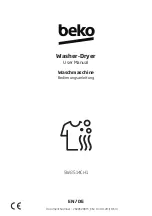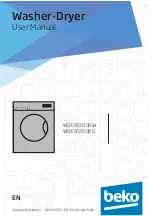
12
EN
Assistance
Before contacting the Technical Assistance Centre:
• Follow the troubleshooting guide to check whether pro-
blems can be solved personally
(see Troubleshooting).
• If not, switch the dryer off and contact the Technical Assi-
stance Centre closest to you.
Spare parts
This dryer is a complex machine. Attempting to repair it per-
sonally or with the aid of an unqualified personnel may put
the safety of people at risk, damage the machine or invalida-
te the spare parts guarantee.
Always contact a qualified technician when experiencing
problems with this machine.
This appliance has been designed, constructed and distributed in compliance with the
requirements of European Directives:
- LVD 2014/35/EU, EMC 2014/30/EU and RoHS 2011/65/EU.
Information on recycling and disposal
As part of our continual commitment towards environmental protection, we reserve the right to use recycled quality compo-
nents to reduce costs for our customers and to minimise materials wastage.
• Disposing of the packaging materials: follow local regulations to allow for recycling of packaging materials.
• In order to minimise the risk of injury to children, remove the door and plug, then cut the power supply cord flush with the
appliance. Dispose of these parts separately to prevent the appliance from being connected to a power supply socket.
Disposal of old household appliances
European Directive 2012/19/EC concerning Waste Electrical and Electronic Equipment (WEEE) states that household
appliances should not be disposed of using the normal solid urban waste cycle. Exhausted appliances should be
collected separately in order to optimise the cost of re-using and recycling materials comprising the machine, while
preventing potential damage to public health and the environment. The crossed-out wheeled bin symbol appears on all
products to remind owners of the obligations regarding separate waste collection.
Owners should contact their local authorities or appliance dealers for further information concerning the correct disposal of
household appliances.






























